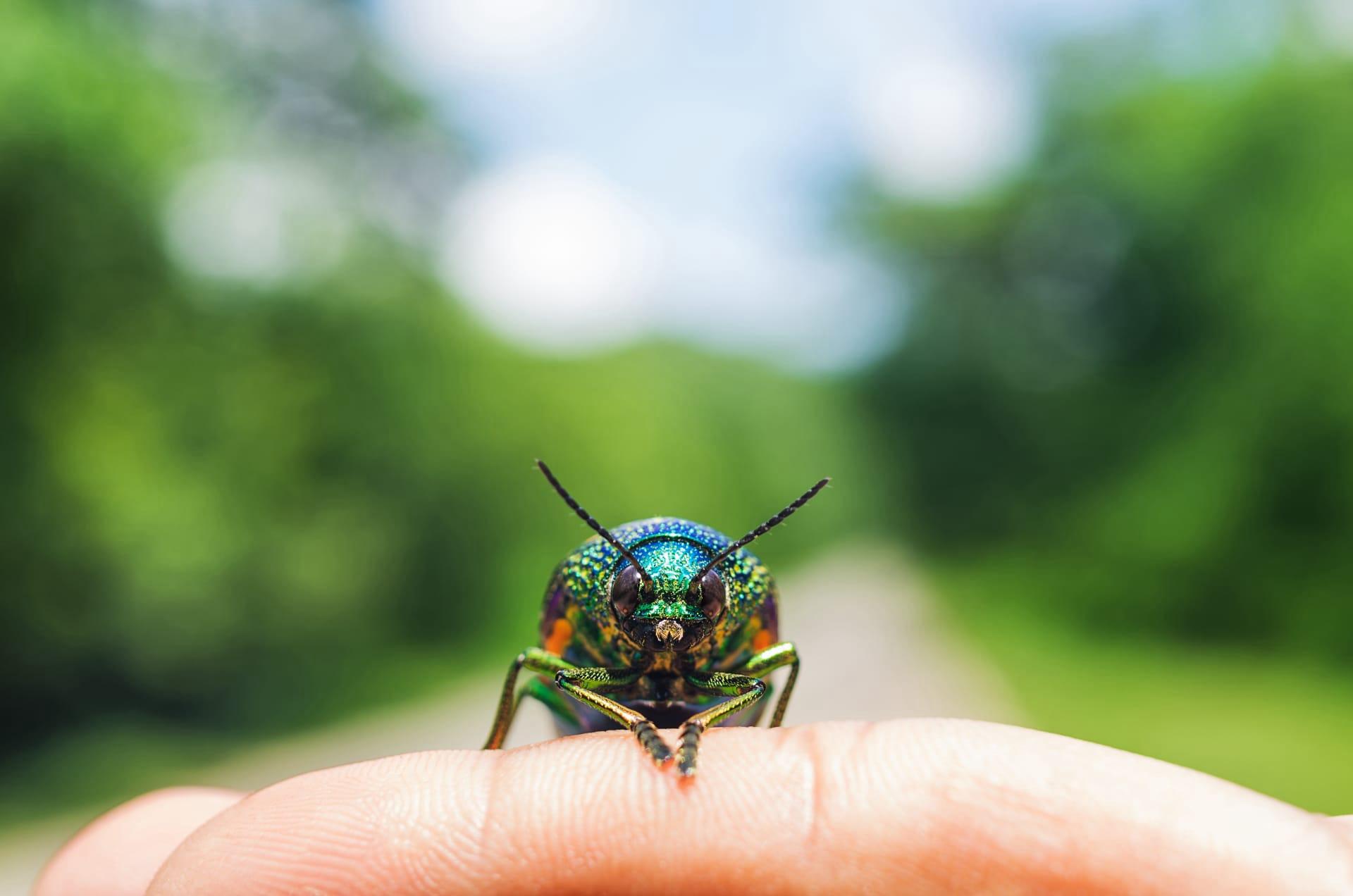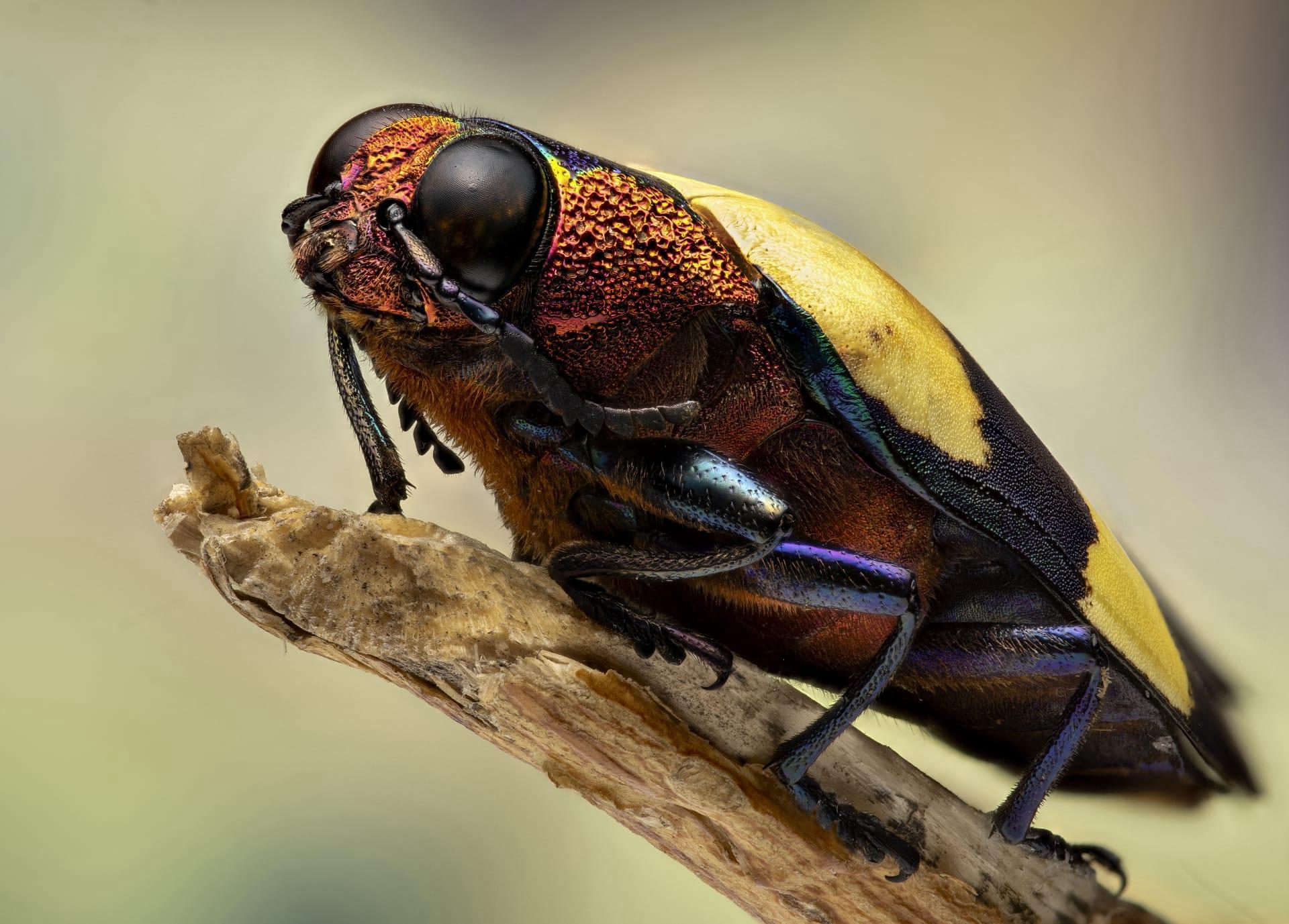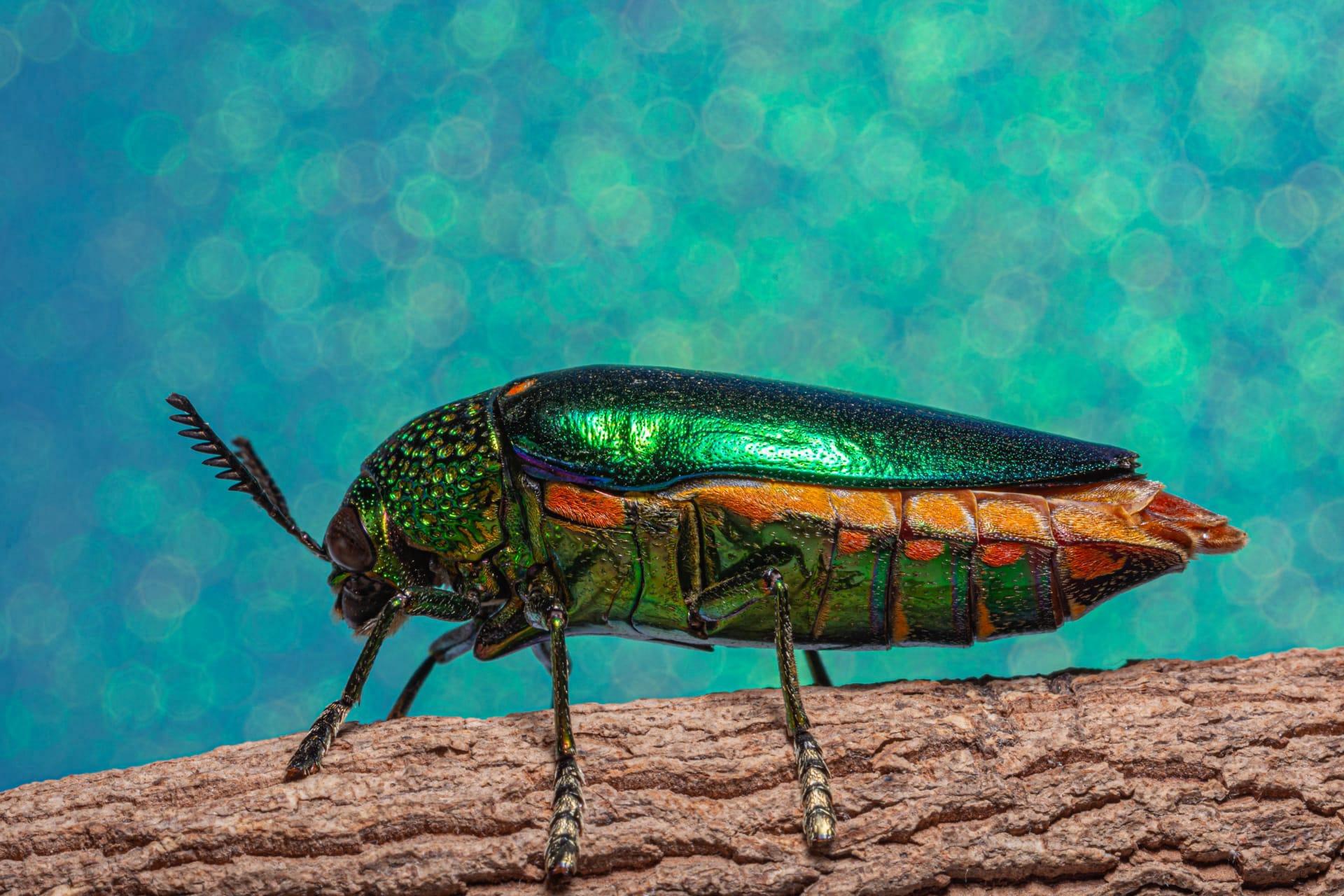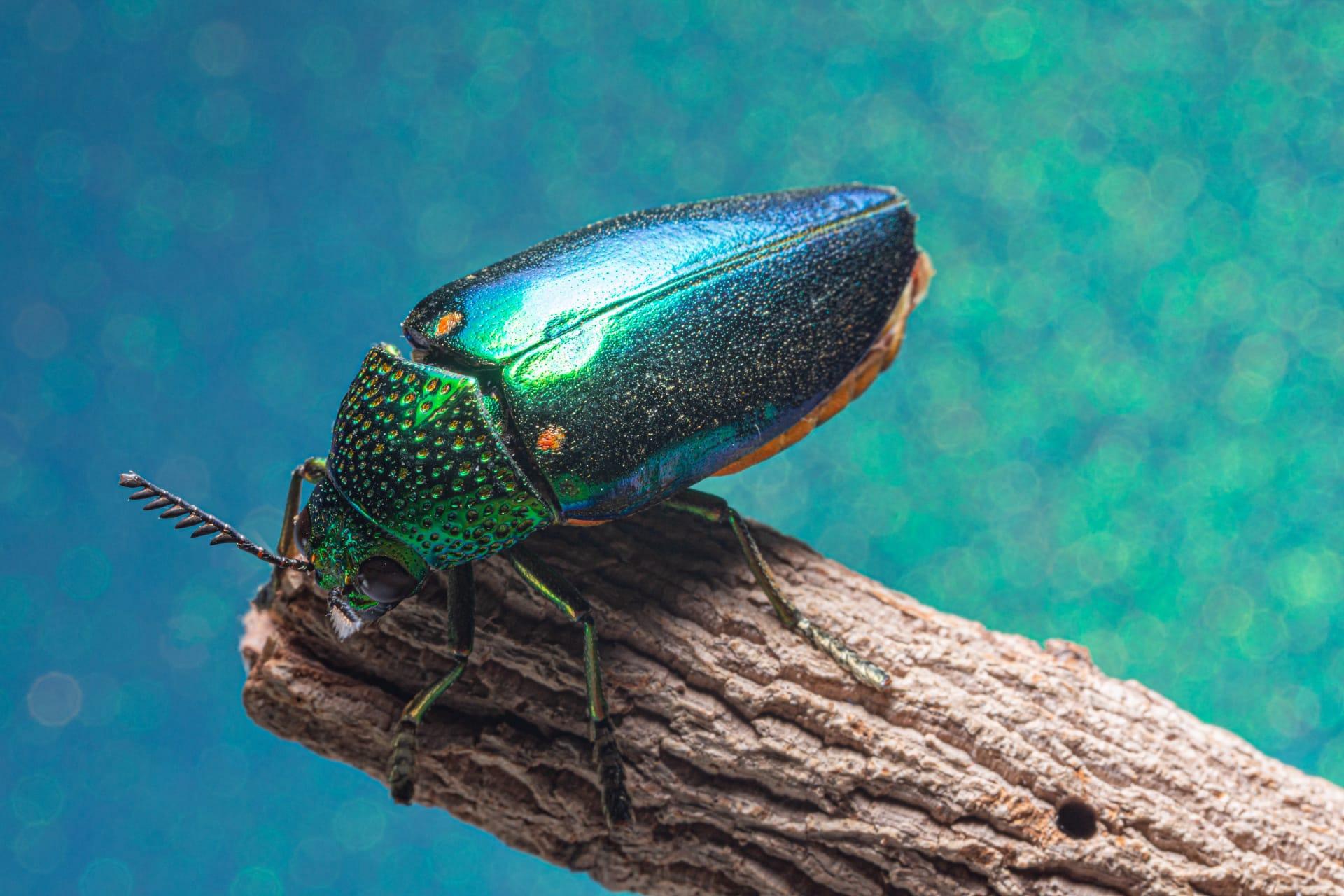Jewel Beetle
- Home /
- Mini Encyclopedia /
- Animal /
- Jewel Beetle
1
Jewel Beetles, known scientifically as members of the family Buprestidae, are a diverse group of beetles known for their stunning iridescence and metallic colors. This family includes over 15,000 known species, making it one of the largest beetle families. The species are classified into multiple genera, with the most well-known genus being Chrysochroa. These beetles are distinguished by their elongated, cylindrical bodies, which can range from just a few millimeters to over 6 inches in length. Their colors are not due to pigmentation but are a result of the microscopic structure of their wing scales, which refract light in different ways.
Jewel Beetles are found worldwide, with the greatest diversity in the tropics. They inhabit a variety of environments, from forests to deserts. These beetles are especially prevalent in Asia, Africa, and Australia, where their bright colors are often most pronounced. In North America and Europe, they are less diverse but can still be found in many areas. Jewel Beetles are typically seen on or around their host plants, as many species have specific plant associations. Some species are known to travel significant distances, showcasing their adaptability to various habitats.

2
Question: Do Jewel Beetles actually contain jewels or precious metals in their bodies?
Answer: This is a common misconception about Jewel Beetles. Their dazzling appearance might suggest the presence of actual jewels or metals, but in reality, their shimmering effect is entirely biological. The beetles' vibrant colors and metallic sheen are due to the unique structure of their exoskeleton. Microscopic ridges and pits on the surface of their wings reflect light in a way that creates the appearance of metallic or iridescent colors. This natural phenomenon is purely structural, with no actual precious materials involved. It's a remarkable example of nature's ability to create vivid colors without pigments.

3
Jewel Beetles have developed a range of survival strategies to thrive in their environments. One notable strategy is their mimicry and camouflage. Many species mimic the appearance of certain toxic or unpalatable species to deter predators. Others blend seamlessly with their surroundings, using their shiny colors to reflect the environment and evade detection. For example, some species that live on tree bark have patterns that mimic the texture and color of the bark.
Another survival strategy of Jewel Beetles is their reproductive behavior. Many species lay their eggs in the crevices of tree bark or inside wood. The larvae, known as flatheaded borers, are wood-borers and can remain inside the wood for several years, depending on the species and environmental conditions. This lifecycle stage allows them to survive in environments where adult beetles might be vulnerable. The larvae feed on the wood, gaining nutrients necessary for their development into adult beetles.

4
In the ecosystem, Jewel Beetles play several roles that underscore their importance. As pollinators, some species facilitate the reproduction of certain plants. While not as efficient as bees or butterflies, their interaction with flowers while feeding on nectar or pollen helps in the pollination process. This role is crucial in maintaining the diversity and health of ecosystems.
As part of the food chain, Jewel Beetles also serve as prey for various predators, including birds, mammals, and other insects. This predation plays a role in controlling their population and maintaining ecological balance. Additionally, the larval stage of these beetles, which involves wood-boring, can impact the health of trees. While often considered pests in forestry, their wood-boring activities can also aid in the decomposition process of dead or dying trees, contributing to nutrient cycling in the ecosystem.

5
Film: "The Secret World of Jewel Beetles" is a documentary produced in the United Kingdom in 2019. This film explores the intricate lives of Jewel Beetles, showcasing their diverse habitats and behaviors. It focuses on their extraordinary colors, the science behind their iridescence, and their role in various ecosystems. The documentary also highlights the challenges these beetles face due to habitat loss and climate change.
Book: "The Lustrous Life of Jewel Beetles" by David Attenborough, published in the UK in 2021, delves into the fascinating world of these insects. Attenborough explores their biological and ecological significance, detailing their life cycle, habitats, and survival strategies. The book is filled with vivid photographs, bringing the hidden world of these beetles to life.
Book: "Iridescent Insects: A Journey into the World of Jewel Beetles" by Sarah Kendrick, published in the United States in 2020, is an engaging exploration of Jewel Beetles. Kendrick, an entomologist, combines scientific information with personal anecdotes from her fieldwork. The book covers various species across different continents, discussing their ecological importance and the threats they face in the modern world.